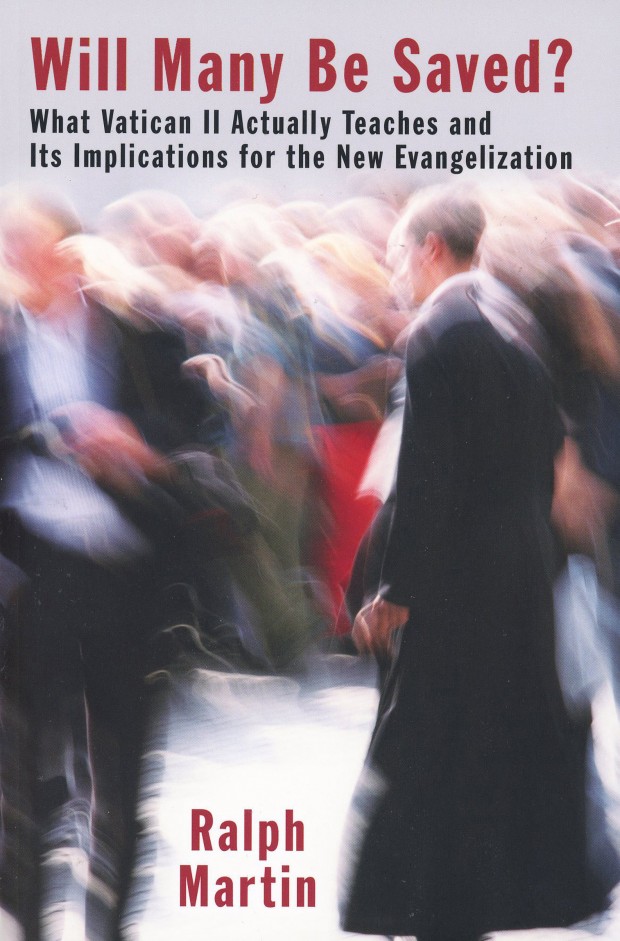
This is the cover of “Will Many Be Saved? What Vatican II Actually Teaches and Its Implications for the New Evangelization,” by Ralph Martin. (CNS)
“Will Many Be Saved? What Vatican II Actually Teaches and Its Implications for the New Evangelization” by Ralph Martin. Wm. B. Eerdmans Publishing (Grand Rapids, Mich., 2012). 320 pp.; $24.
One of the things Catholics are encouraged to do during the Year of Faith is to familiarize themselves — or refamiliarize themselves — with the documents of the Second Vatican Council.
In “Will Many Be Saved,” Ralph Martin is more specific, particularly when it comes to those engaged in the new evangelization. His focus is on the 16th section of “Lumen Gentium” (Dogmatic Constitution on the Church), the section that deals with who will be saved and missionary activity in the church.
The matter of who will be saved is a key component of evangelization, according to Martin, because: “One reason why evangelization may be stymied is that there seems to be in the minds of many Catholics, and other Christians as well, a lack of conviction that being a Christian is really necessary in order to be saved.” If being a Christian isn’t necessary, he asks, “why bother to evangelize?” The remainder of the book supports his thesis as to why being Christian is necessary and why evangelization is imperative.
For the Catholic who seeks an overview of the 16 decrees and constitutions of Vatican II, and for the Catholic who has little knowledge about the council and its work, this is not the book.
This book does not lack scholarship, as evidenced by the extensive chapters on doctrinal development and scriptural foundations, particularly Romans 1 and 2, of “Lumen Gentium.” In separate chapters, Martin questions the theology of Karl Rahner and Hans Urs von Balthasar regarding salvation, noting he has “analyzed the speculative theology of two very influential theologians, whose teachings on this topic have tended to overshadow the teaching of LG 16, and have not taken it sufficiently into account.” He goes to great lengths to explain how and why.
In the final chapter, Martin calls for “an adjustment in the pastoral strategy” of Vatican II, maintaining that the emphasis must be on “the whole teaching of Jesus and the apostles as it comes to us in Scripture, tradition and the authoritative teaching of the magisterium.”
For the Catholic who seeks an overview of the 16 decrees and constitutions of Vatican II, and for the Catholic who has little knowledge about the council and its work, this is not the book. It has a specific focus that rarely strays from the 16th section of “Lumen Gentium.”
Seekers of such an overview may discuss the “who will be saved?” topic, but this volume will provide them with more than they will need or be able to grasp in the less academic conversations that might take place at the home or parish levels.
Readers who are theologically prepared may welcome the immersion in “Lumen Gentium” that Martin offers. That theological preparation or background, i.e., a professional grounding in Scripture and Catholic doctrine, is essential if readers are to follow the detailed, i.e., thorough, scholarship he provides about salvation.
***
Olszewski is general manager of the Catholic Herald, a publication serving the Catholic community in southeastern Wisconsin.
PREVIOUS: As a Christmas movie gift, ‘Les Miserables’ has it all
NEXT: ‘Silver Linings Playbook’ takes page from troubled life, as seen in Delaware County



Share this story